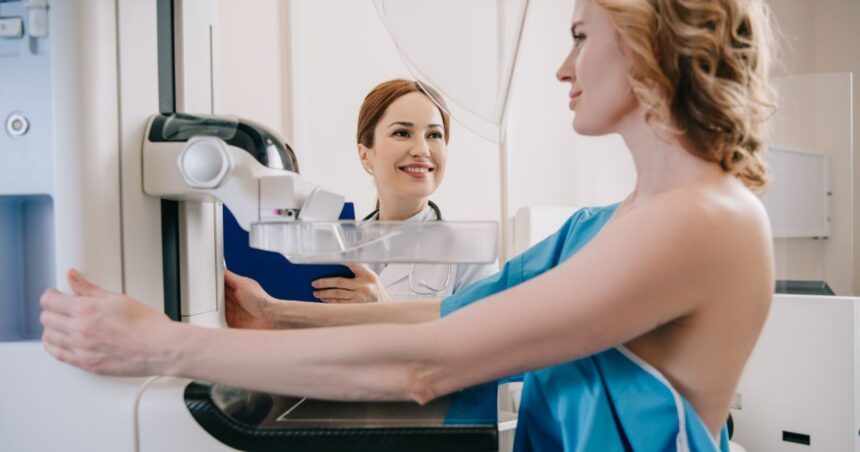Screening and diagnostic mammograms serve different purposes in breast health. Screening mammograms are routine checks to catch potential problems early, often before symptoms appear. On the other hand, diagnostic mammograms are used to investigate specific concerns, like unusual symptoms or findings from a screening.
To help you stay informed about your breast health, I will explain the key differences, how they work, and when each type is needed.
What Is a Screening Mammogram?
A screening mammogram is a routine X-ray of the breasts used to check for breast cancer in people who have no symptoms. It’s recommended for women starting at the age of 40, but your doctor may suggest starting earlier if you have a higher risk of breast cancer.
Screening mammograms are done regularly, often once a year or every two years, to catch any early changes in the breast tissue. The goal is to find cancer before you can feel it or notice any symptoms. Early detection means treatment can start sooner, leading to better outcomes.
How Does a Screening Mammogram Work?
During a screening mammogram, each breast is X-rayed, usually from two different angles. The process takes about 20 minutes, and while it can be uncomfortable, it’s usually over quickly. The radiologist will then examine the images to see if any signs need further attention.
What Is a Diagnostic Mammogram?
A diagnostic mammogram differs from a screening mammogram because it is used when there is already a reason to look more closely at the breast tissue. It may be recommended if:
- You have symptoms like a lump, pain, or nipple discharge.
- A screening mammogram found something unusual that needs further investigation.
- There’s a history of breast issues, and your doctor wants a closer look.
Diagnostic mammograms are more detailed than screening mammograms. They focus on a specific breast area to get a clearer image and understand what might happen.
How Does a Diagnostic Mammogram Work?
More X-ray images are taken during a diagnostic mammogram, often from different angles or with other techniques. The radiologist might also zoom in on a specific part of the breast. This process may take longer than a screening mammogram but provides more detailed information.
Differences Between Screening and Diagnostic Mammograms
Understanding the key differences between these two types of mammograms can help you feel more prepared for your appointment:
- Purpose: Screening mammograms are for routine check-ups, while diagnostic mammograms are for investigating specific concerns.
- Frequency: Screening mammograms are done regularly (yearly or every two years), whereas diagnostic mammograms are done as needed based on symptoms or findings.
- Detail Level: Diagnostic mammograms provide more detailed images to investigate specific areas.
- Time and Process: Screening mammograms are quicker and involve fewer images. Diagnostic mammograms take more time because they require detailed imaging from multiple angles.
When Might You Need a Diagnostic Mammogram?
If a screening mammogram shows something unusual or you’re experiencing symptoms like a lump or pain, your doctor may recommend a diagnostic mammogram. It’s a way to gather more information and determine whether further tests, such as a biopsy, are needed.
It’s important to remember that being called back for a diagnostic mammogram doesn’t mean you have cancer. Most of the time, these tests find something harmless, like a cyst or dense breast tissue. The goal is to get more clarity and make sure everything is okay.
Final Thoughts
Both screening and diagnostic mammograms are essential tools for breast health. Screening mammograms help catch issues early before symptoms even appear, while diagnostic mammograms help investigate any concerns. Understanding the difference can help you feel more at ease when you go for your mammogram.
If you’ve been scheduled for either type of mammogram, remember they are there to protect your health. Ask your doctor for questions, and stay proactive about your breast health. Early detection and timely follow-ups can make all the difference in your journey to wellness.

